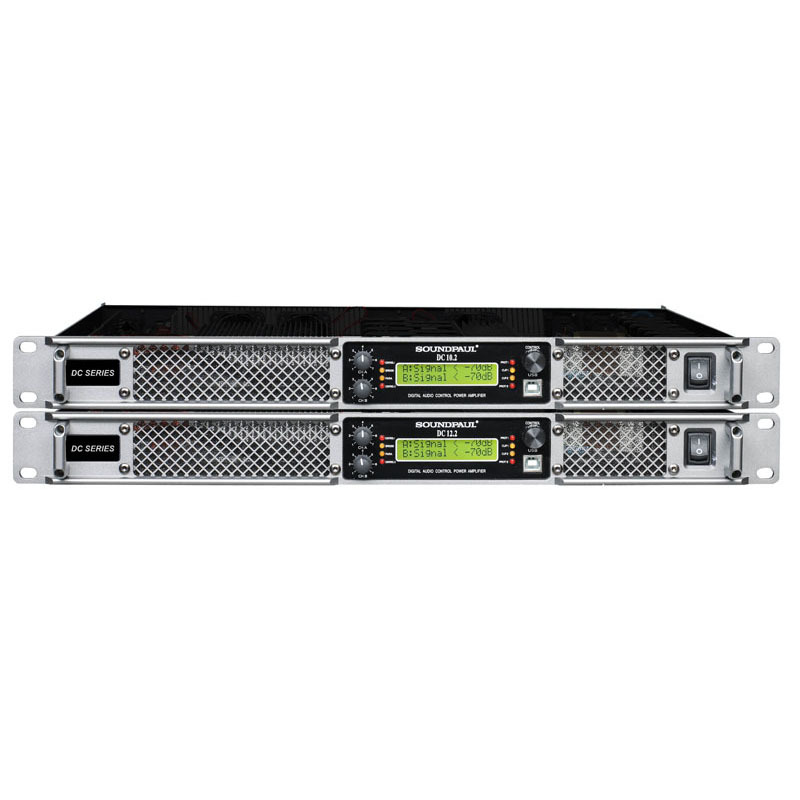Exploring the Versatility of DSP Power Amplifiers in Modern Audio Systems
Release Date:
2024-08-29
In the rapidly evolving world of audio technology, the digital signal processing (DSP) power amplifier has emerged as a pivotal component. This sophisticated device integrates digital signal processing capabilities with power amplification functions, offering unparalleled control over audio signals. As we delve into the intricacies of DSP power amplifiers, it becomes evident that their influence on modern audio systems is profound and multifaceted.

A DSP power amplifier is fundamentally designed to enhance audio performance by manipulating digital signals before they are amplified and sent to speakers. The digital signal processing element allows for meticulous adjustments to the audio output, such as equalization, time alignment, and crossover settings. These features are not merely beneficial; they are essential for achieving optimal sound quality in various applications, from home theaters to professional audio setups.
One of the key advantages of utilizing a DSP power amplifier is its ability to provide precise control over the frequency response. By fine-tuning the equalization settings within the DSP, audio enthusiasts can tailor the sound to suit specific room acoustics or personal preferences. This level of customization ensures that every listening experience is uniquely optimized, enhancing the enjoyment derived from music or movies.
Time alignment is another critical function that DSP power amplifiers execute with remarkable precision. In complex audio systems, differences in the arrival time of sound waves from various speakers can result in phase discrepancies, which degrade the stereo image and diminish the sense of presence. With a DSP power amplifier, delays can be introduced to align the audio output, ensuring that all frequencies reach the listener simultaneously for a cohesive and immersive experience.
Crossover settings further demonstrate the versatility of DSP power amplifiers. In systems that incorporate multiple driver types, such as subwoofers or tweeters, the DSP can manage the distribution of frequencies to each driver. This process, known as digital crossover, eliminates the need for bulky analog crossover networks and allows for seamless integration of components, resulting in cleaner, more defined sound across the entire frequency range.
The implementation of DSP power amplifiers also brings about significant improvements in system efficiency and flexibility. Since the DSP handles many of the preprocessing tasks digitally, the power amplifier can focus on delivering high-current output to drive speakers effectively. This division of labor not only simplifies the design of audio equipment but also reduces energy consumption and heat generation, making these amplifiers an eco-friendly choice for audiophiles.
Moreover, the connectivity options provided by DSP power amplifiers are extensive. Many models feature advanced interfaces such as USB, Ethernet, or even wireless connectivity, enabling them to integrate seamlessly into smart home ecosystems. This means users can control their audio systems remotely, using smartphones or voice assistants, adding another layer of convenience to the listening experience.
It is worth noting that the development of DSP power amplifiers has not stagnated. Manufacturers continue to innovate, incorporating machine learning algorithms that adapt to user preferences over time or integrating cloud-based services that offer access to a wealth of online content. These advancements ensure that DSP power amplifiers remain at the forefront of audio technology, meeting the ever-evolving needs of consumers.
In conclusion, the DSP power amplifier stands as a testament to the synergy between digital processing and traditional power amplification. Its capacity to refine and enhance audio signals, coupled with its potential for integration into smart technologies, positions it as an indispensable component for both amateur and professional audio setups. As we look towards the future of sound reinforcement and entertainment, the role of the DSP power amplifier is poised to grow even more prominent, shaping the way we experience music and media in our daily lives.
Keywords:
DSP power amplifier
Related News






